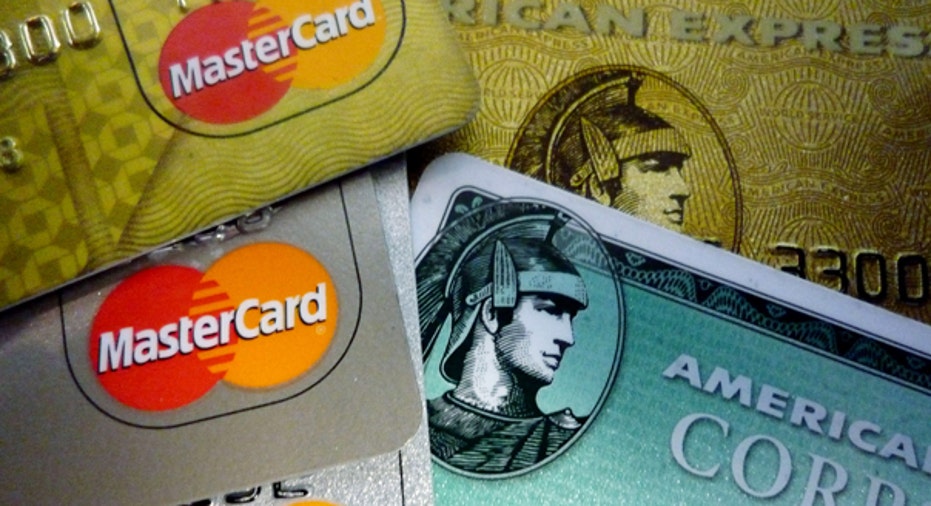Fed: Banks Remain Reluctant to Ease Terms on New Cards

Four years have passed since the credit crisis caused banks across the nation to cut credit limits and block access to new cards for millions of consumers. Since then, banks have eased their standards somewhat and made it slightly easier to get a new card or qualify for a credit limit increase. However, the pace of change remains glacially slow, according to research released Feb. 4 by the Federal Reserve -- and may not change significantly for some time.
According to the Federal Reserve's survey of senior loan officers, a small fraction of U.S. banks told the Federal Reserve they made it modestly easier in the last three months of 2012 for consumers to qualify for new credit cards with favorable terms.
However, none of the banks surveyed made substantial changes to how they evaluate applicants for new cards, even though many of those same banks made it much easier in the last quarter of the year for people to qualify for other types of loans, such as car loans.
Experts say that banks are gradually becoming more comfortable with extending some types of loans, such as auto loans, to consumers with less-than-stellar credit, because those loans are considered to be less risky for the issuer.
Banks are slower to make substantial changes to credit card terms because rules imposed by the Credit CARD Act of 2009 make it riskier than it used to be to issue new cards to consumers with lower credit scores, says Keith Leggett, a senior economist at the American Bankers Association.
"The credit environment is improving," says Leggett. However, per the CARD Act, credit card issuers can no longer raise a current customer's APR without giving the cardholder at least 45 days' notice. As a result, banks' "ability to price for risk has been severely curtailed," says Leggett. "That makes banks cautious," he says, and less willing to take bigger risks on consumers whose credit scores fall below a certain threshold.
As long as credit card issuers' ability to flexibly change their pricing on existing accounts is limited, issuers are likely to remain tightfisted for some time, he says.
Appetite for new credit remains anemic
That said, many consumers may not have noticed that it's still tough to qualify for a new card -- because large numbers of consumers aren't applying for them.
Consumers' appetite for new cards is still notably weak, according to the Fed's latest report. In fact, a significant number of banks reported weaker demand in the last quarter of the year than even in the previous quarter.
Consumer demand for new cards had increased somewhat over the summer of 2012, but has remained tepid throughout the year as many consumers focus on paying down the debt they have, rather than taking on more than they can afford.
Experts say that until the economy significantly improves, consumers are unlikely to overwhelm lenders with applications for additional credit any time soon.
"I think most households are really pretty cautious about taking on more debt," says Robert Mellman, a senior economist at J.P. Morgan Chase. "They see that it's a pretty tough economic environment. Unemployment rates are quite high and if you lose your job, it's pretty hard to find another one."
Inside the survey
Each quarter, the Federal Reserve surveys loan officers across the country and asks them for a brief snapshot of what lending was like in the past three months.This survey included responses from senior loan officers at 66 domestic banks and 22 U.S. branches and agencies of foreign banks.
Some of the highlights of this quarter's report include:
- Most banks left their lending standards untouched in the last three months of 2012. However, three banks said they made it slightly easier for consumers to qualify for a new card, while two banks said they made it harder.
- Most banks remained picky about the credit scores of those applicants that they did approve, with only two banks reporting that they increased the number of loans they made to consumers with scores that fell below a certain threshold.
- The minimum credit score required for approving new cards remained static at most banks. Two said they lowered the minimum required score, one raised it.
- The majority of banks also left terms on new and existing accounts alone as well. However, a substantial number of banks, including three of the largest issuers, said they made it slightly easier for credit card holders to qualify for a bigger credit limit. Just one bank said they either cut limits or made it tougher for cardholders to qualify for a credit limit increase.
- Three banks said they lowered credit card APRs, while one bank said it raised them.
- However, the lower APRs on some cards may not have attracted as many new cardholders as lenders hoped. Seven banks, including five of the largest issuers, said that demand for new credit was weaker in the fourth quarter than in the previous three months. Five banks, including three smaller banks, said that demand was somewhat stronger.
Experts say that banks' caution toward extending credit to consumers with flawed credit is here to stay, at least for now. Cardholders, meanwhile, appear to be in no hurry to substantially pad their wallets with new cards. "I think there's caution both by lenders and by borrowers in terms of credit," says Chase Bank's Mellman. "Both got burned pretty badly in the last recession."
He expects that both moods will eventually brighten with time. "I think the mood of both will change, but I think it's a very gradual process," says Mellman. "I think by the time you get to the end of 2013, things will be a little better," he says.
See related: Fed: As long as unemployment is high, rates will remain ultra low



















